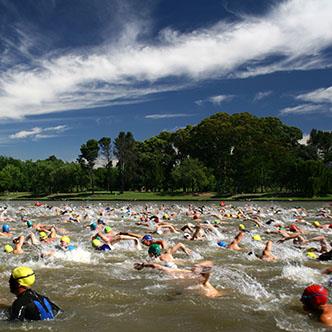
Improved education and safety precautions could be lifesaving for triathlon athletes, based on a recent study that found cardiac arrests and death are not uncommon among older, male participants.
Published in the Annals of Internal Medicine, this study looked at the potential health risks associated with triathlons—competitive events that include a combination of swimming, biking and running. Triathlons have become increasingly popular in recent years, with an estimated 460,000 U.S. participants in 2015. However, race-related fatalities have raised significant concerns about event safety.
To further explore, researchers analyzed all deaths and cardiac arrests during U.S. triathlons between 1985 and 2016. Data was collected from national registries and U.S. triathlon records, which together included nearly 5 million event participants.
Overall, there were 163 life-threatening events recorded over the three-decade period, including 135 sudden cardiac deaths, 13 sudden cardiac arrests, and 15 trauma-related deaths (e.g., bicycle crashes). The average age of victims was 47, and 85% were male. Researchers found that risk of cardiac arrest and death was significantly higher in men over the age of 60.
Importantly, two-thirds of heart events occurred in the swim portion of the triathlon, while most of the trauma deaths (e.g., bicycle collisions) occurred during the bike segment.
Based on available data, researchers estimate that there are 1.74 deaths or cardiac arrests per 100,000 triathlon participants, which is higher than previous estimates. Researchers also note that based on available autopsy data, nearly half of victims had underlying heart conditions.
The take-home message, according to authors, is the need for improved education and safety precautions in triathlons. Findings suggest that most deaths occur among middle-aged and older men, many of which have undiagnosed heart issues. It’s important that athletes are well-aware of the health risks associated with participation, especially older men who are at greatest risk.
It’s also critical that events are well-equipped to handle any medical emergencies that may occur, particularly during the swim segment where heart events are most common. As authors explain, the more event coordinators can do to ensure the safety of participants, the more effective they’ll be at preventing and addressing life-threatening events.